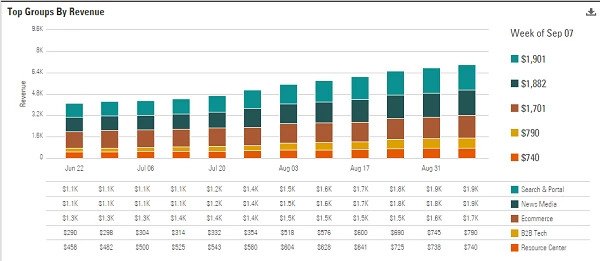When Google shifted to 100-percent secure search globally, encrypting all search query keyword data in September 2013, it represented the single largest change for SEO and search marketers, forever transforming the way they approached their profession – including how they performed competitive analysis.
As BrightEdge's Mark Mitchell shared in his SES London 2014 presentation, “Spy v Spy: Competitive Analysis Beyond The Keyword in A Secure Market,” this tectonic shift brought new challenges to search competitor analysis, as enterprise SEO companies and brands realized they needed to adapt their approach to this branch of their research within this new “keyword not provided” landscape. In this post, we'll look at how to perform an SEO competitive analysis using some of the tools in the BrightEdge platform, as well as some of the tips Mark shared in his SES London presentation.
A new market, new approach
Ever since 100 percent secure search, the new center of the SEO universe is the Web page, not the keyword. This evolution of SEO and search also means a new approach to competitive analysis.
With SEO now measurable and scalable – and becoming a primary revenue driver for many companies, CMOs are seeing the results and are getting involved. SEO is no longer a standalone position or department; rather, it has become integrated into the larger organizational digital marketing team. Similarly, competitive analysis is no longer limited to simply viewing what your competitors are up to as an independent SEO function, but instead has become a larger digital marketing responsibility.
A 4-step framework for SEO competitive analysis
Given the formidable amount of data that an enterprise-level brand may need to analyze competitors, start with defining which pages or areas within individual pages lend themselves to a cost-effective SEO competitive analysis, focused on which content actually drives revenue. Here, you can see those metrics in a BrightEdge report:

Once you’ve defined your priorities for SEO competitive analysis, the BrightEdge framework consists of four key steps:
- Discover the Competition
- Analyze Keyword Insights
- Analyze Page and Content Insights
- Create an Action Plan Based upon Insights
1. Discover your competition
Of course, the cornerstone of an effective SEO competitive analysis is to know your competition in search. With scale efficiencies in mind, we recommend understanding your competitors by page groupings, as shown in the BrightEdge Share of Voice graph below:
It’s also critical to understand and benchmark your competitors across multiple page groupings to gain comparative insights.
2. Analyze keyword insights
Next, take the plunge, diving into what and how your competitors are doing on the search engines globally. Here, you’ll want to assess rank data not only in terms of how your competitors position in the various search engine results pages, but how they’re performing at the Universal Search level – including images, videos, and local – to determine the sources of their search traffic.
When analyzing Universal Search results, it’s important to note how your competitors are appearing in the search landscape overall, and optimize for those keywords, pages and content types where they have universal results that your brand doesn’t.
Conversely, it’s essential to reinforce optimization where your brand is showing higher visibility relative to your competitors in Universal Search.
A key point in performing this deep dive is to note how visibility compares by volume according to device, such as mobile versus desktop. Ask: Does this keyword/page behavior differ by device?
3. Analyze page and content insights
Having discovered your competitors’ search positioning and performance, it is now time to investigate their content strategy and spot opportunities:
- What pages are ranking and for which keywords?
- Are these keywords relevant to your business?
- Where are the gaps: how does their Web presence and profile compare to yours?
- If an opportunity is found, track and optimize for those keywords!
It’s important to find backlink opportunities by tracking the number and quality of your competitors’ links as well.
Ask the following questions:
- Do you have enough high-quality links compared to your competition?
- Who is linking to your competition?
- What is the authority of these domains?
- Is the lack of quality backlinks the answer?
Drilling down further still into your competitors’ content and linking strategies, the following are three critical areas to identify:
- High-value link targets (identify link hubs that are driving rankings for this market segment)
- Link strategies (classify links based on type, such as blog, news, PR, partnerships, social, etc.)
- Discover backlink opportunities (do you have links of each type to these hubs and domains?)
4. Create an action plan based upon insights
Next, create an action plan gleaned from your competitive analysis. Essential to your organization’s plan of action is education, which is up to you to start doing. Who else is going to be able to support you in this effort within the company? How will you take these insights and scale them across the organization? Finally, the success of your competitive analysis hinges on having a monitoring strategy in place that will allow you to quickly and easily scale your performance versus that of your competitors. Monitor your "share of voice" at regular intervals in BrightEdge for a picture of success.
All of the tools needed for an in-depth competitive analysis are available within the BrightEdge SEO platform and Data Cube. If you’re already using BrightEdge, dig into your next SEO competitive analysis project with the steps outlined in this post. I hope you’ll find it helpful.

